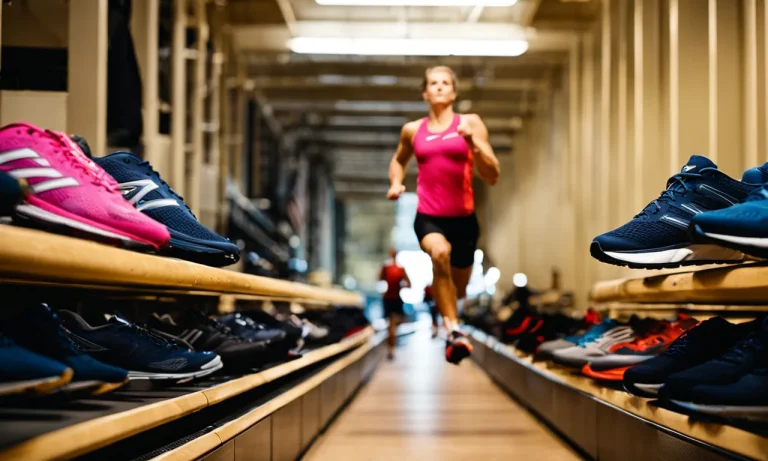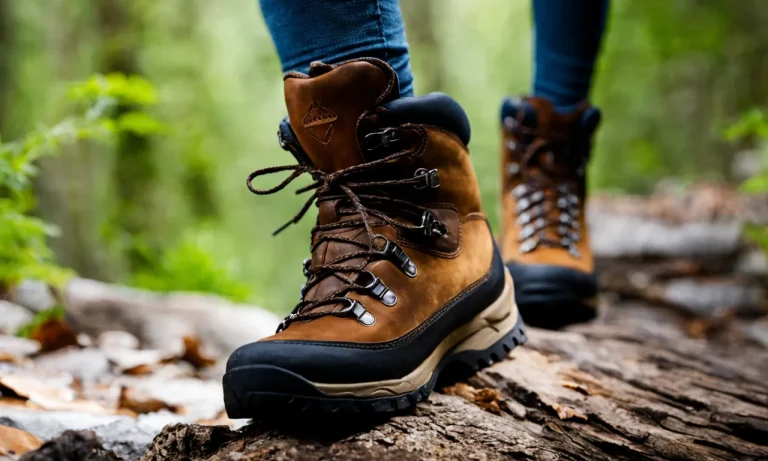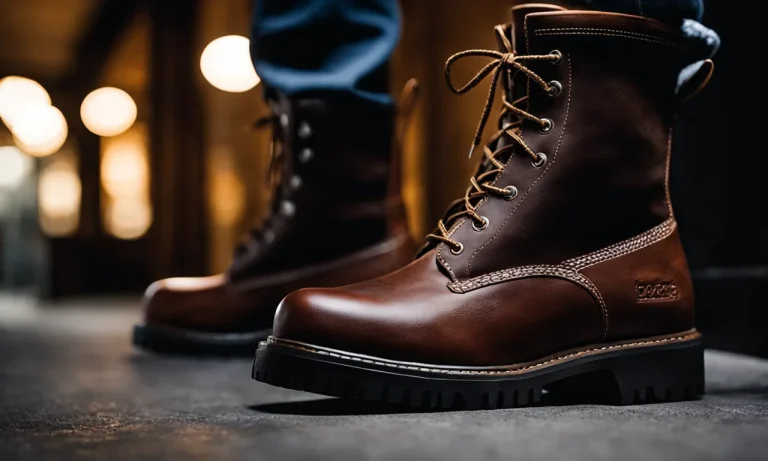Opening your own sneaker store can be an exciting and potentially lucrative business venture for shoe lovers and entrepreneurs alike. With the continued popularity of sneaker culture and the collectible sneaker market, now is a great time to tap into this industry.
If you’re short on time, here’s a quick answer to your question: to open a sneaker store, you need to develop a business plan, find a retail space, obtain business licenses and permits, establish vendor relationships with sneaker brands, buy inventory, hire staff, market your store, and implement good retail management practices to build a successful sneaker business.
Developing a Strong Business Plan
When opening a sneaker store, it is crucial to develop a strong business plan that will serve as a roadmap for success. This plan will outline your business model, target market, financial projections, funding requirements, and marketing and branding strategy.
By carefully considering these factors, you can set yourself up for long-term success in the competitive sneaker industry.
Your business model and target market
The first step in developing your business plan is to determine your business model and identify your target market. Are you planning to specialize in a particular type of sneakers, such as athletic shoes or limited-edition releases? Will you focus on selling new or used sneakers?
Understanding your niche will help you tailor your inventory and marketing efforts to attract the right customers.
Researching your target market is essential to understand their preferences, buying habits, and price sensitivity. You can gather this information through surveys, online research, and by analyzing data from sneaker enthusiasts’ forums and social media groups.
By understanding your target market’s needs and desires, you can better position your store to meet their demands.
Financial projections and funding requirements
Creating realistic financial projections is an important part of your business plan. This includes estimating your startup costs, monthly expenses, and projected sales. Consider expenses such as store rent, inventory, employee salaries, marketing, and utilities.
By forecasting your revenue and expenses, you can determine how much funding you will need to start and sustain your sneaker store.
If you require funding, there are several options available, including personal savings, bank loans, or seeking investors. It is important to have a solid business plan and financial projections to present to potential investors or lenders.
Additionally, you may want to explore government grants or small business loans that are specifically designed to support entrepreneurs in the retail industry.
Marketing and branding strategy
To attract customers and build a strong brand, it is crucial to develop a comprehensive marketing and branding strategy. This includes creating a unique brand identity, designing a visually appealing store layout, and implementing effective marketing campaigns.
Utilize social media platforms such as Instagram, Facebook, and Twitter to showcase your inventory, engage with customers, and build a community of sneaker enthusiasts. Collaborate with influencers or establish partnerships with local sports teams or organizations to increase brand awareness.
Investing in search engine optimization (SEO) and online advertising can also help drive traffic to your online store or physical location. Consider offering exclusive deals or hosting special events to create buzz and attract customers.
By consistently delivering a great customer experience and delivering on your brand promise, you can build a loyal customer base.
Remember, developing a strong business plan is essential for the success of your sneaker store. Take the time to thoroughly research and analyze your market, financials, and marketing strategies to set yourself up for long-term success.
Finding the Right Location
Research ideal neighborhoods and retail spots
When opening a sneaker store, it is crucial to research and identify ideal neighborhoods and retail spots that align with your target market. Consider factors such as demographics, consumer preferences, and competition in the area.
Conducting thorough market research will help you understand where your potential customers are located and which areas have a high demand for sneakers.
One useful resource for researching ideal neighborhoods is the U.S. Census Bureau. Their website provides a wealth of demographic data that can help you identify areas with a high concentration of sneaker enthusiasts.
Additionally, you can explore local retail spots by visiting popular shopping districts, attending sneaker conventions, or connecting with other sneaker store owners for insights.
Lease a storefront in a high foot traffic area
Securing a storefront in a high foot traffic area is essential for the success of your sneaker store. Look for locations near popular shopping malls, busy streets, or areas with a high concentration of other retail stores.
These areas attract a large number of potential customers, increasing the visibility and accessibility of your store.
Consider partnering with a commercial real estate agent who specializes in retail properties. They can help you find suitable storefronts and negotiate favorable lease terms. Additionally, explore online platforms like LoopNet and CommercialCafé to discover available retail spaces in your desired area.
Design the retail space
The design of your sneaker store plays a significant role in attracting and engaging customers. Create a visually appealing and functional retail space that showcases your sneakers and reflects your brand identity.
Consider hiring a professional interior designer who understands the retail industry and can help you create a unique and immersive shopping experience.
When designing your store, think about factors such as the layout, lighting, and display shelves. Use eye-catching displays and arrange your sneakers in a way that makes it easy for customers to browse and find what they are looking for.
Incorporate your brand colors and logo to create a cohesive and recognizable brand image.
For inspiration, you can visit popular sneaker stores like Nike’s flagship stores or Adidas’ retail locations. Pay attention to the layout, merchandising techniques, and overall atmosphere they create.
Getting Licenses and Permits
Register your business name and structure
Before you can open your sneaker store, it’s important to register your business name and structure. This will ensure that your business is recognized as a legal entity. You will need to choose a unique and catchy name for your store and then register it with the appropriate government agency.
The process may vary depending on your location, so it’s important to research the specific requirements in your area. Registering your business name and structure will not only give you a professional image but also protect your brand.
Apply for a sales tax permit
When selling products, including sneakers, it’s necessary to apply for a sales tax permit. This permit allows you to collect and remit sales tax to the government. The requirements for obtaining a sales tax permit vary from state to state, so it’s crucial to check with your local tax authority for the specific guidelines.
Failing to obtain a sales tax permit can result in penalties and legal issues, so make sure to complete this step before opening your sneaker store.
Obtain necessary business licenses
Depending on your location and the nature of your sneaker store, you may need to obtain additional business licenses. These licenses are required to operate legally and ensure that you comply with local regulations.
Some common licenses that may be required include a general business license, a retail license, and a zoning permit. It’s important to research the licensing requirements in your area and apply for the necessary licenses well in advance.
This will help you avoid any delays or legal complications when opening your sneaker store.
Establishing Vendor Relationships
Research popular and niche sneaker brands
Before opening a sneaker store, it is important to research both popular and niche sneaker brands. This will help you understand the market demand and identify the brands that align with your target customers. Look for brands that have a strong following and are known for their quality and design.
You can find information about popular sneaker brands on websites like Highsnobiety and Sneaker News.
Contact vendors and establish accounts
Once you have identified the brands you want to carry in your sneaker store, it’s time to reach out to the vendors and establish accounts. Start by contacting the brands directly or reaching out to their authorized distributors.
Some brands may have specific requirements for becoming an authorized retailer, so make sure to inquire about their application process and any necessary documentation. Building a good relationship with the vendors will not only help you secure the supply of sneakers but also give you access to exclusive releases and limited-edition collections.
Negotiate pricing and terms
When establishing vendor relationships, it’s crucial to negotiate pricing and terms that work for both parties. Take into consideration factors such as the quantity of sneakers you plan to order, the frequency of your orders, and the payment terms.
By demonstrating your commitment and potential volume of business, you may be able to negotiate better pricing and more favorable terms. Remember that building a mutually beneficial relationship with your vendors is key to long-term success.
Purchasing Inventory
One of the key aspects of opening a successful sneaker store is purchasing the right inventory. Here are some important steps to consider when it comes to purchasing inventory for your sneaker store:
Determine product mix across brands, styles, sizes
It is crucial to determine the product mix for your sneaker store. This involves carefully selecting the brands, styles, and sizes that you want to offer to your customers. Analyze market trends and consumer preferences to ensure you have a diverse range of options that cater to different tastes and preferences.
An excellent resource for tracking market trends and consumer preferences is Statista. They provide valuable insights and statistics on the sneaker industry, which can help guide your decision-making process.
Use pre-booking or pre-ordering for limited releases
When it comes to limited edition releases, using pre-booking or pre-ordering systems can be extremely beneficial. This allows you to gauge customer demand and ensure that you have enough inventory to meet the needs of your customers.
Implementing a pre-booking system also helps create a sense of exclusivity and anticipation among your customers, driving up interest and sales. It is important to communicate clearly with your customers about the pre-booking process and any associated terms and conditions.
Plan inventory management system
An efficient inventory management system is essential for a successful sneaker store. This involves keeping track of stock levels, monitoring sales data, and replenishing inventory as needed. Having a well-organized system in place will help you avoid stockouts or overstocking, ensuring that you can meet customer demand while minimizing financial losses.
There are various inventory management software options available, such as Shopify and Vend, which can streamline the inventory management process and provide you with valuable insights into your business performance.
By carefully considering the product mix, utilizing pre-booking or pre-ordering systems for limited releases, and implementing an efficient inventory management system, you can ensure that your sneaker store is well-stocked and ready to meet the demands of your customers.
Hiring Qualified Staff
When opening a sneaker store, one of the most crucial aspects is hiring qualified staff. Having knowledgeable and passionate employees can greatly enhance the shopping experience for customers and contribute to the success of your business.
Sales associates knowledgeable about sneakers
It is essential to hire sales associates who have a deep understanding of sneakers. They should be familiar with different brands, models, and the latest trends in the sneaker industry. This knowledge will enable them to assist customers effectively, answer their questions, and make informed recommendations.
Additionally, having staff members who are sneaker enthusiasts themselves can create a genuine connection with customers and foster a sense of community within your store.
Hire store manager experienced in retail
Bringing in a store manager with prior experience in the retail industry is vital for the smooth operation of your sneaker store. A skilled manager will have the necessary expertise to handle inventory management, merchandising, scheduling, and other essential aspects of running a successful retail business.
They will also be able to effectively lead and motivate the sales team, ensuring that everyone is working towards the same goals and providing exceptional customer service.
Provide customer service training
Customer service is a crucial aspect of any retail business, and a sneaker store is no exception. It is important to provide comprehensive training to your staff on how to deliver excellent customer service.
This includes teaching them how to engage with customers, handle complaints or returns, and provide product knowledge in a friendly and professional manner. By investing in customer service training, you can ensure that every interaction with customers leaves a positive impression and encourages repeat business.
Implementing Marketing Strategies
When it comes to opening a sneaker store, implementing effective marketing strategies is crucial for success. By creating a strong brand presence and reaching out to potential customers, you can maximize your store’s visibility and attract a loyal customer base.
Here are some key marketing strategies to consider:
Leverage social media and influencers
In today’s digital age, social media has become a powerful tool for marketing. Utilize platforms like Instagram, Facebook, and Twitter to showcase your sneaker offerings, engage with your target audience, and build a community around your store.
Collaborate with popular influencers in the sneaker industry to promote your store and increase brand awareness. Their endorsement can go a long way in attracting customers and generating buzz about your store.
According to a study conducted by Hootsuite, 73% of marketers believe that social media marketing has been “somewhat effective” or “very effective” for their business. With the right content and engagement strategy, you can leverage social media to connect with sneaker enthusiasts and drive traffic to your store.
Host in-store events and promotions
Hosting in-store events and promotions is a great way to attract customers and create a buzz around your sneaker store. Consider organizing exclusive release parties for highly anticipated sneaker launches.
This not only creates excitement among sneakerheads but also gives you an opportunity to showcase your store’s unique offerings. Offer special discounts, limited edition releases, or even collaborate with local artists to create a unique experience for your customers.
By hosting these events, you can create a sense of exclusivity and build a loyal customer base. Word-of-mouth marketing is powerful in the sneaker community, and hosting memorable events will generate positive buzz about your store.
Get local media coverage
Local media coverage can significantly boost the visibility and credibility of your sneaker store. Reach out to local newspapers, magazines, and online publications to share your store’s story and unique selling points.
Invite journalists and bloggers to visit your store and experience what sets you apart from the competition.
When you receive media coverage, make sure to share it on your social media platforms and website. This will further enhance your store’s reputation and attract potential customers who are interested in the sneaker culture.
Implementing these marketing strategies will help you establish your sneaker store as a go-to destination for sneaker enthusiasts. By leveraging social media, hosting in-store events, and getting local media coverage, you can create a strong brand presence and attract a loyal customer base.
Managing Retail Operations
When opening a sneaker store, managing retail operations is crucial for success. This involves implementing effective strategies to track inventory and sales, providing excellent customer service, and ensuring security and loss prevention measures are in place.
Let’s explore these key aspects in more detail:
Implement inventory and sales tracking
One of the most important tasks in managing a sneaker store is keeping track of inventory and sales. This ensures that you have the right products in stock and helps you make informed decisions for restocking.
Utilizing a reliable inventory management system can simplify this process by providing real-time updates on stock levels, tracking sales data, and generating reports for analysis. It’s also essential to regularly conduct physical inventory counts to reconcile any discrepancies and maintain accurate records.
Provide excellent customer service
Providing exceptional customer service is paramount in the retail industry, and a sneaker store is no exception. Building strong relationships with your customers can lead to repeat business and positive word-of-mouth recommendations.
Train your staff to be knowledgeable about the products you carry, offer personalized recommendations, and go above and beyond to meet customer needs. Additionally, creating a welcoming and comfortable shopping environment can enhance the overall customer experience.
Monitor security and loss prevention
Protecting your inventory from theft and minimizing losses is crucial for the success of your sneaker store. Implementing security measures such as surveillance cameras, alarm systems, and secure display cases can deter potential thieves.
It’s also important to train your staff on loss prevention techniques, such as proper cash handling procedures and identifying suspicious behavior. Regularly reviewing security protocols and making necessary updates can help ensure the safety of your merchandise and the overall security of your store.
Conclusion
Opening a sneaker store allows you to share your passion for shoes with others. But it requires careful planning, significant upfront investment, solid vendor relationships, and strong retail management skills.
By following the steps outlined here, you’ll be well on your way to building a thriving sneaker business.
Remember to continually adapt to sneaker trends and your local market. Provide a unique in-store shopping experience and utilize social media marketing. With dedication and smart business decisions, your dream of owning a sneaker store can become a reality.






